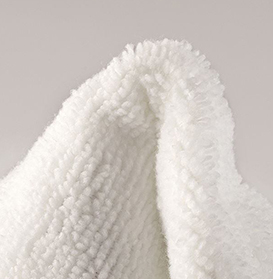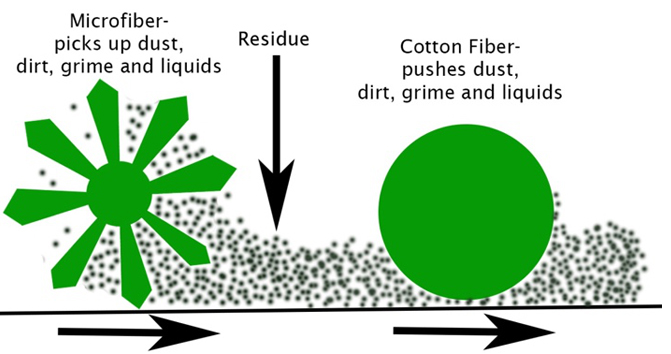Because of the characteristics of the microfibers, using microfiber cloths for cleaning can make housekeeping both easier and more effective.
Cloths not made from microfiber tend to push dirt and gunk around on surfaces, so cleaning can be a real pain. The beauty of microfiber cloths is the split fibers that they’re made up of create more surfaces that can capture dirt, dust and even bacteria. Many viruses are a bit too small to be scooped up by microfibers, but a cloth with fibers so small it can remove bacteria is pretty impressive, right? Because of this, you can use microfiber cloths for cleaning many surfaces with nothing more than water.
Have you ever wiped down your kitchen counter with a cotton cloth and then had to go back over it with a paper towel to get rid of the remaining moisture and debris? Well, microfiber can be used dry, so you eliminate the need for that second round of swiping. As if that wasn’t exciting enough, polyester and fats play well together, which means microfiber is great for lifting grease and oil off surfaces without the aid of strong chemical cleaning agents.
In addition, the porous nature of microfiber cloths makes them very absorbent and allow them to dry quickly. If you’ve ever stepped on a microfiber bathmat after showering, you have experienced firsthand how fast-drying this material can work. Therefore, even if you do dampen the cloths for cleaning stubborn smudges, they’ll barely leave a trace of liquid behind.



